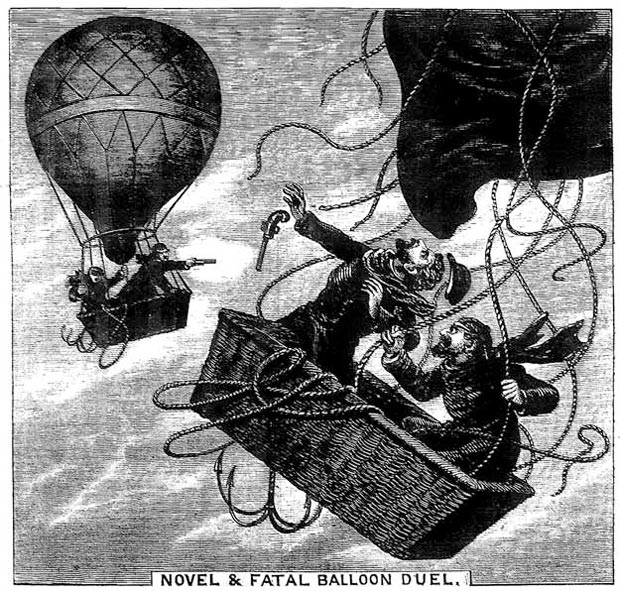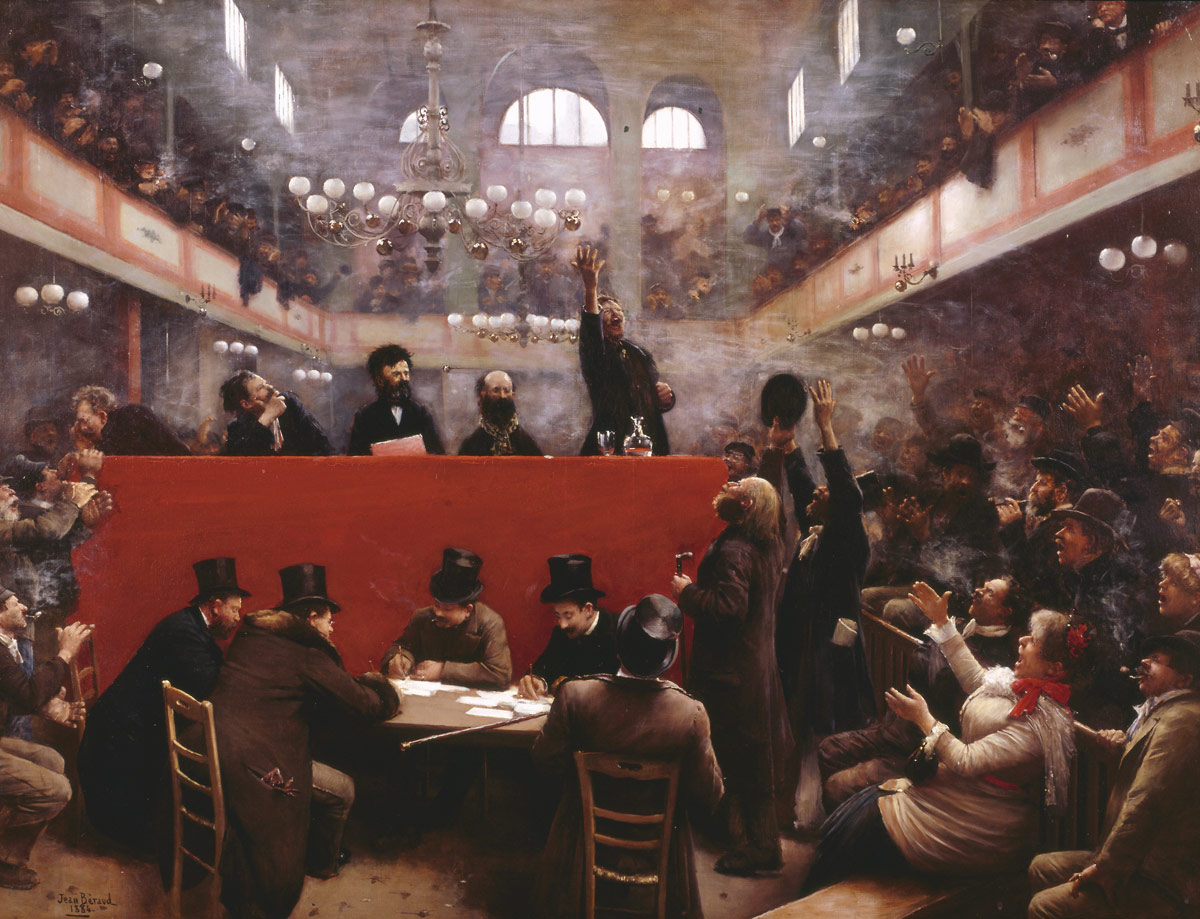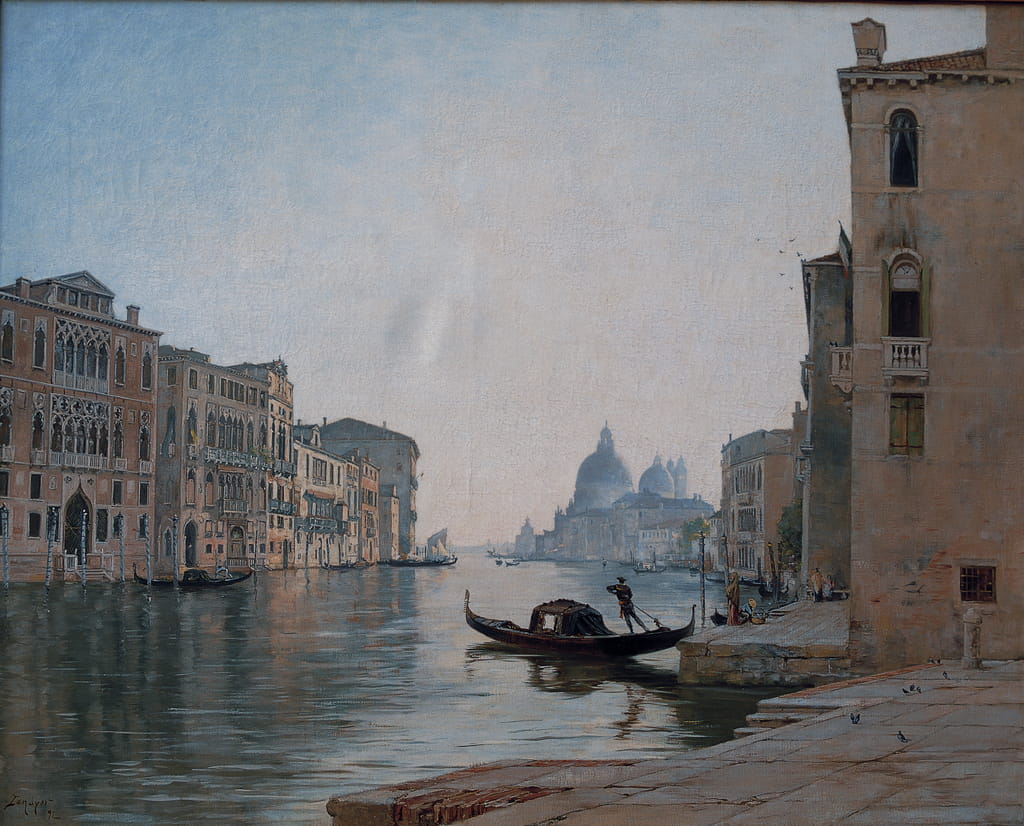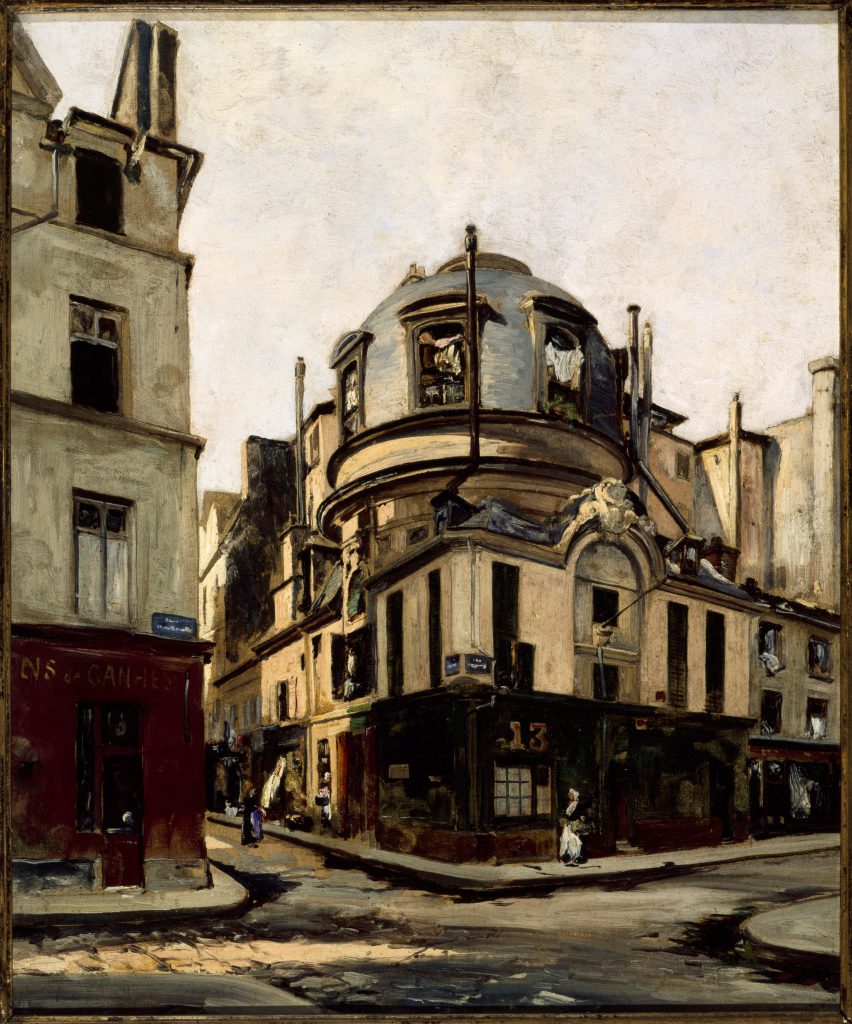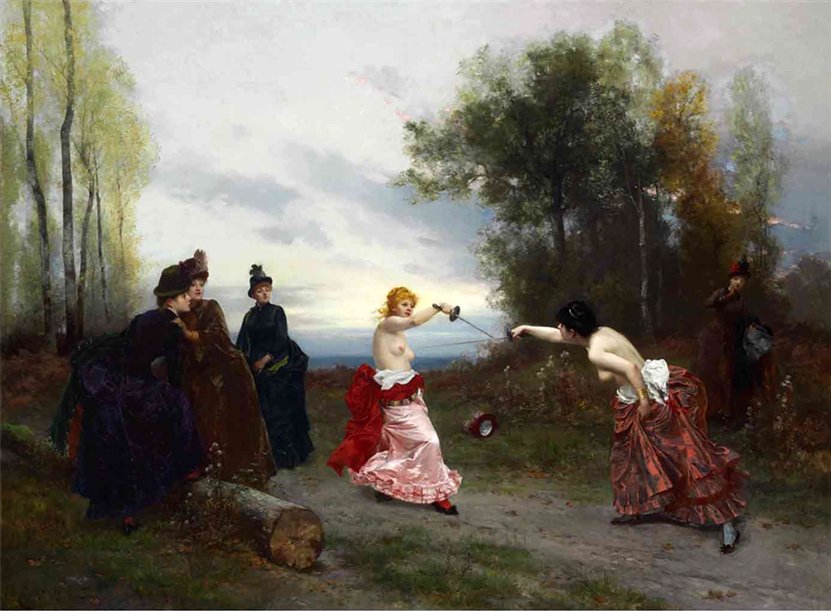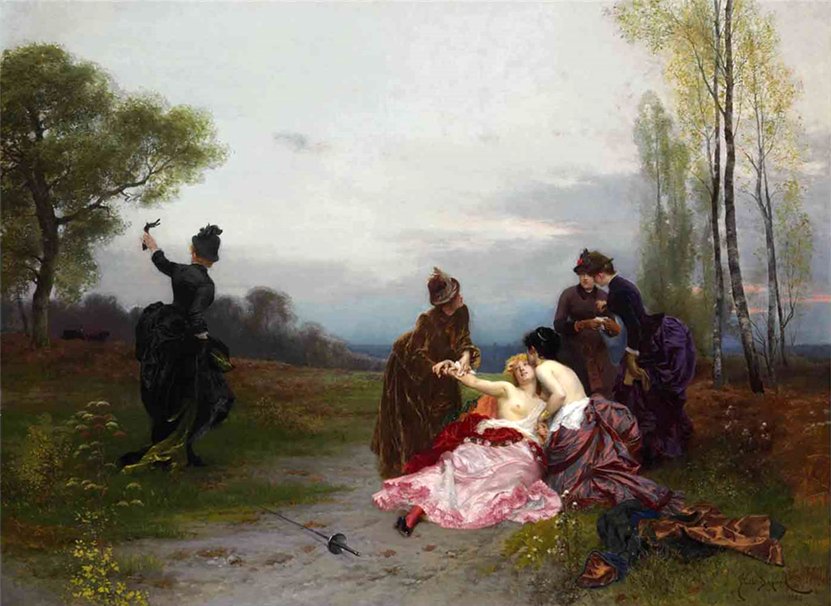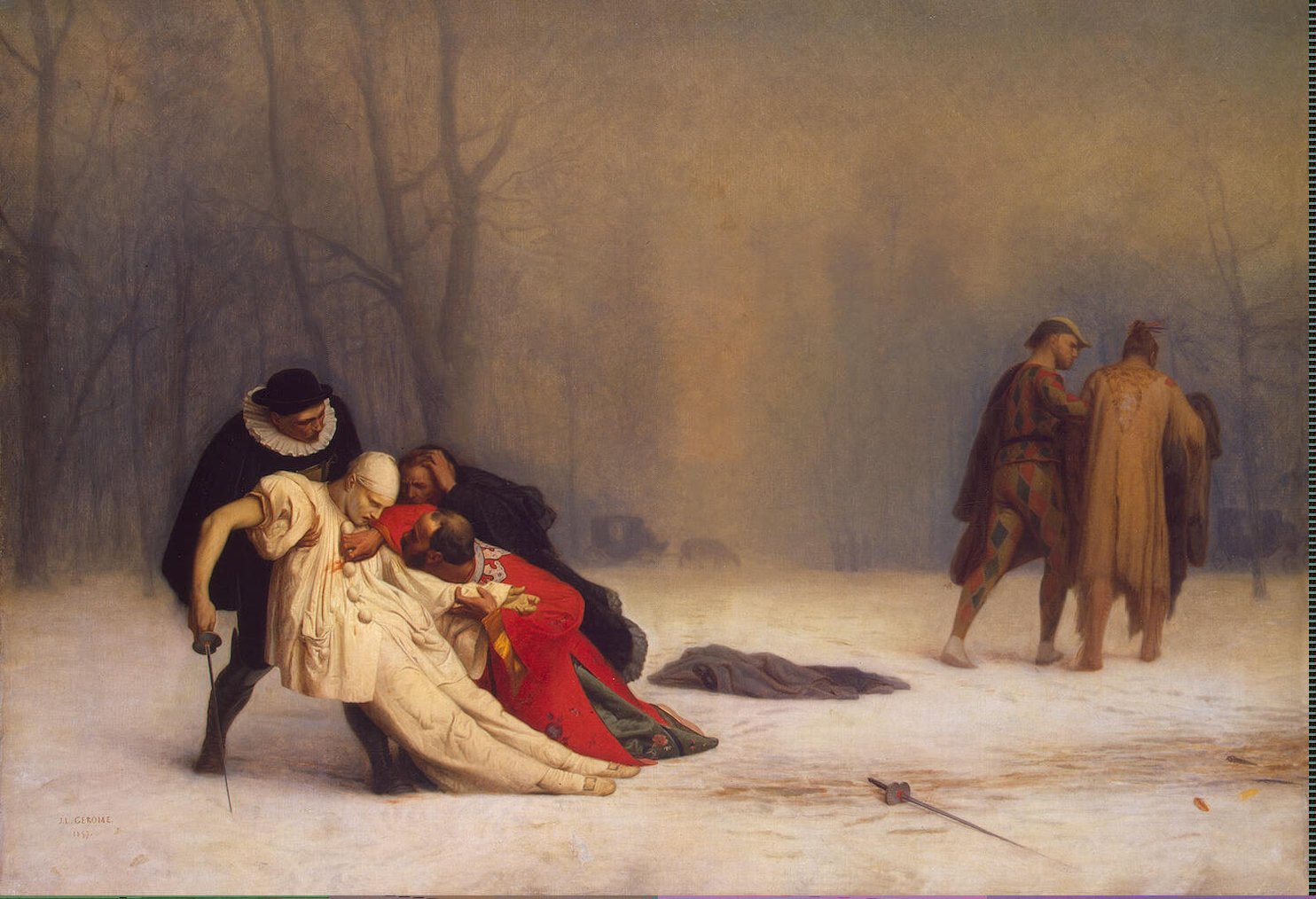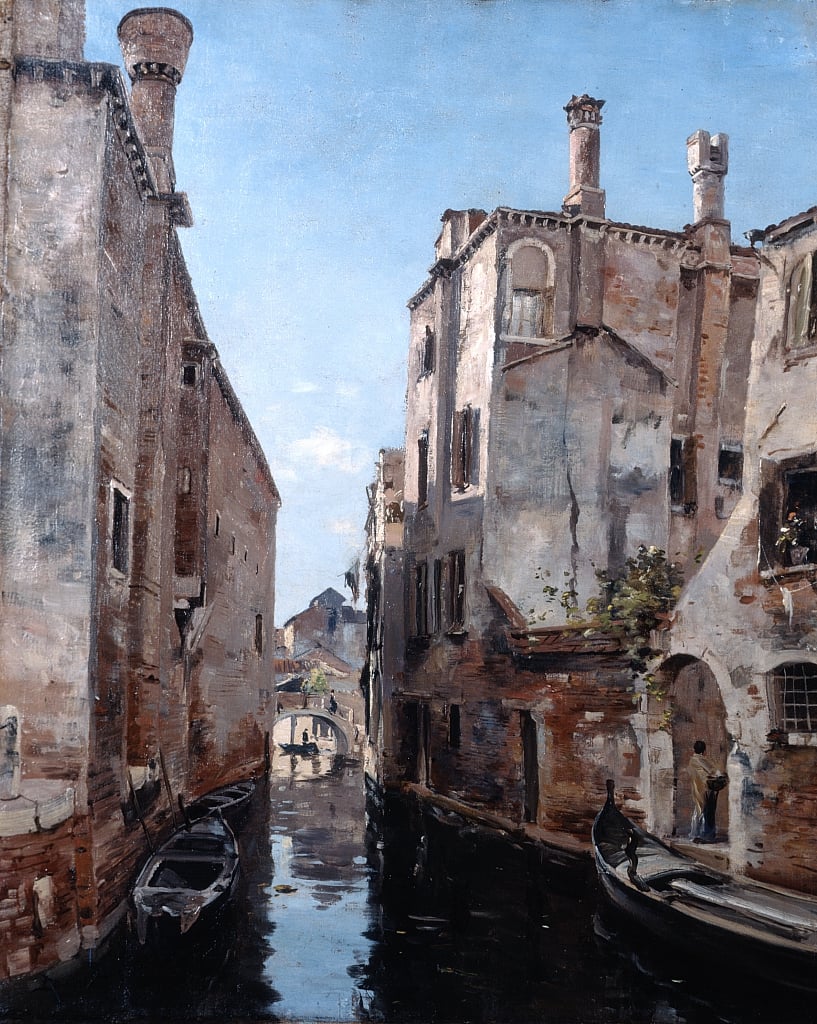
Duelling
Originating from medieval codes of chivalry, the art of duelling persisted in the 19th century. Although the classic sword or rapier was replaced with pistols, both weapons continued to be used till the end of the 19th century. Because a lot of promising army officers were killed in duels, the army disencouraged participating in duels. Duelling was illegal and therefore mostly fight at dawn. Killing an opponent was regarded murder but was punished mildly. However, most duels were fought to first blood after which the code of honour was restored.
In 1787, the Chevalier de Saint-Georges, the son of an African-American slave who was raised in Paris and became a gifted violist and fencer, was invited by the prince of Wales to a visit including some fencing duels. He was matched with an even more intriguing character, the Chevalier d’Eon. This French diplomat who disguised as a woman to spy on the Russian court, had to seek asylum in London and requested to be formally acknowlegded as a woman, starting from 1777.
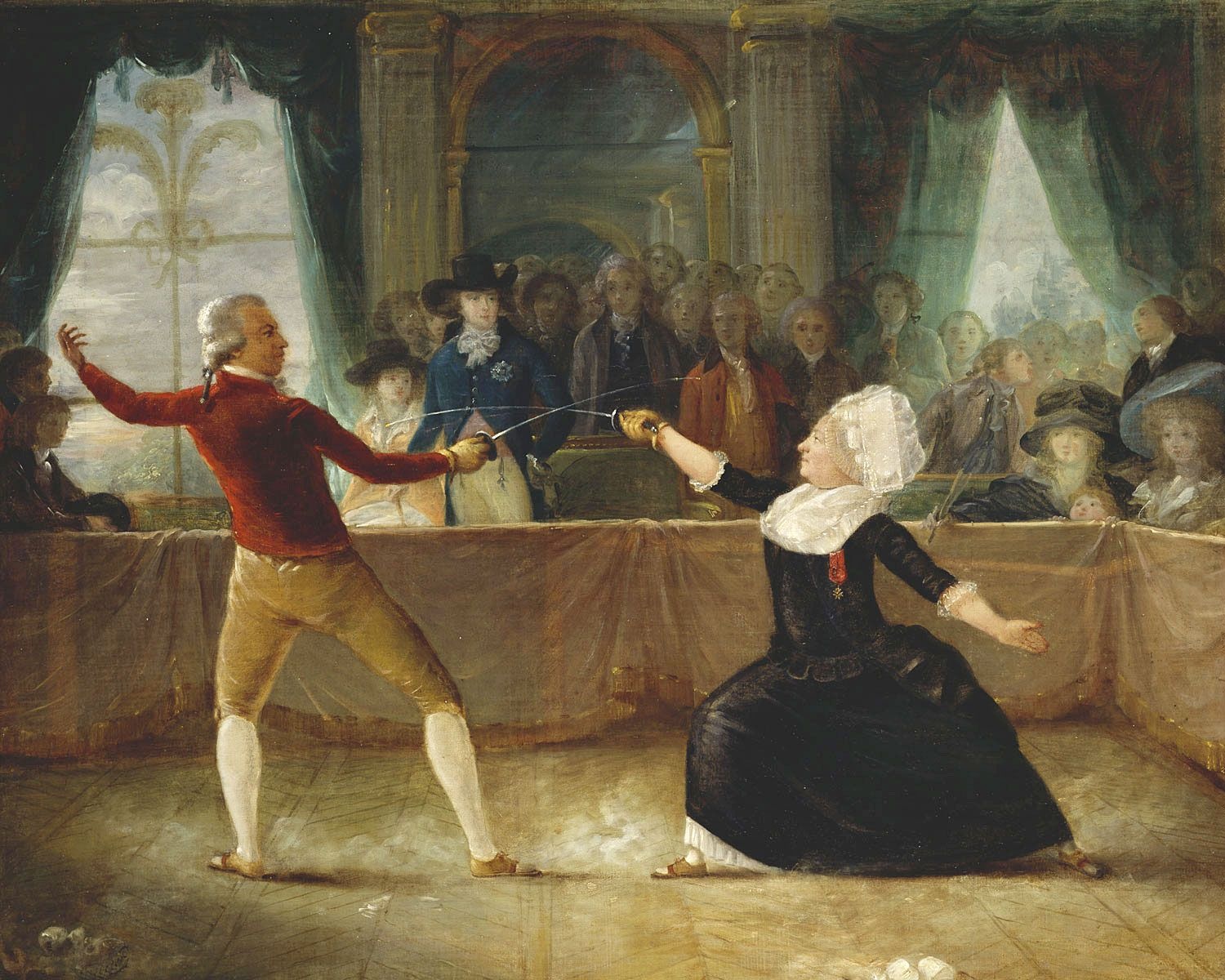
Fencing Match between St.-Georges and ‘La chevalière D’Eon’ on April 9, 1787, by Abbé Alexandre-Auguste Robineau
Besides its use in a duel, fencing was also practised as a sport by both man and woman. Jean Beraud, famous for his portrayal of the Paris society, portrayed a female fencer, a so called escrimeuse.
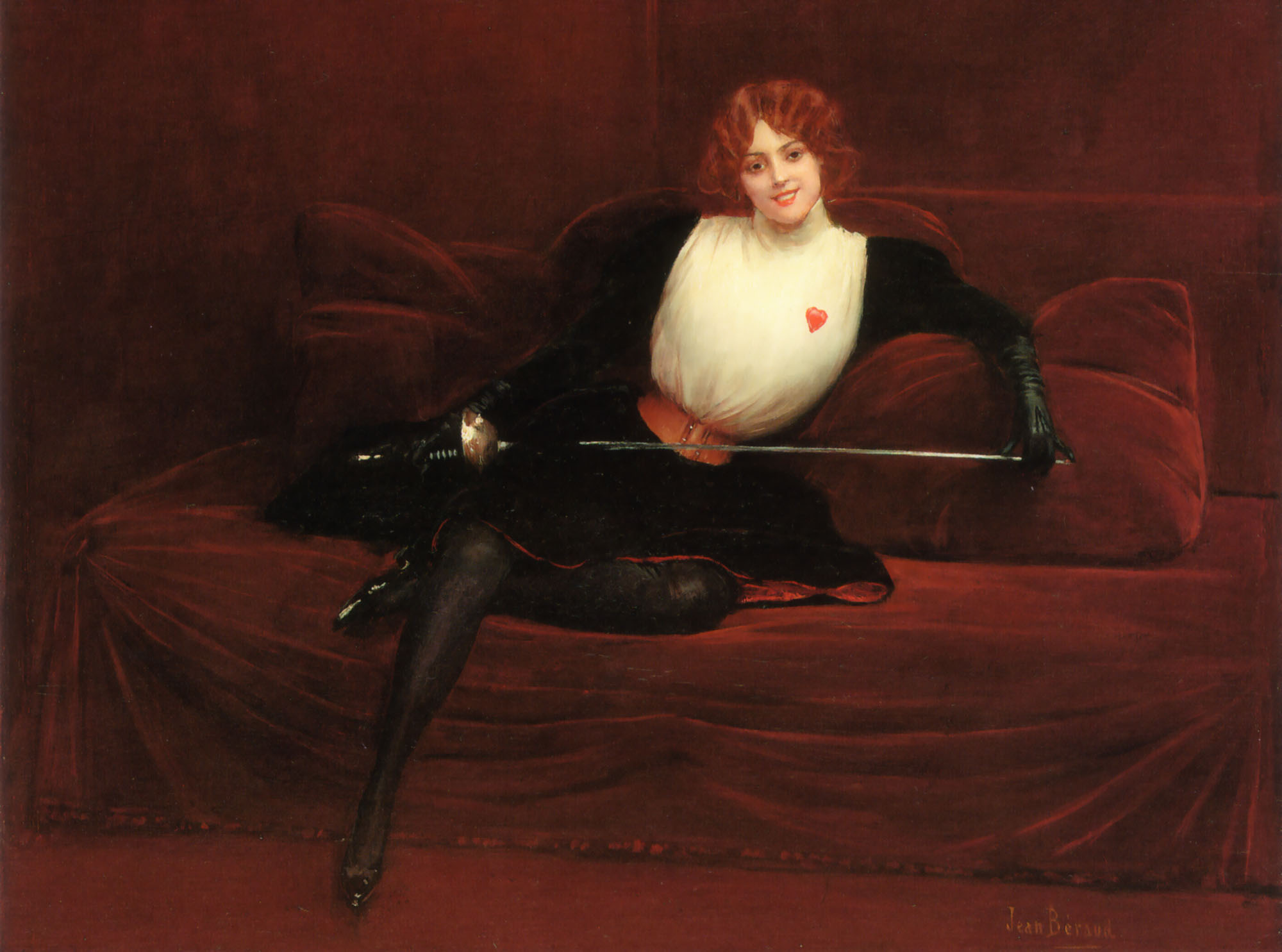
L escrimeuse, Jean Beraud
In Germany, a special sort of fencing was practised by university students which was called mensur. Scars from a mensur duel were regarded as trophies. mostly on the left side of the face, where blows would fall from a right-handed duellist. The duellist were to stand with body protection and goggles with steel noseguard on their positions without dodging, aiming to hit the unprotected areas of their opponents face.
.jpg)
Mensur im Walde, Gustav Adolf Closs, 1890

Renommierbummel, George Muhlberg, 1900
In Russia, duelling was immortalized by the poet Pushkin. In his story about the dandy Onegin and his neighbour poet Lensky, he describes a duel between the two of them. Ilya Repin painted this scene in watercolours. In the duel, the second of Lensky, did not try to prevent the duel which is the most important task of the second. Even after Onegin oversleeps the duel and arrived one hour too late (this was a reason for losing a duel) , the second does not declare Lensky the winner and pursues the duel with fatal consequences for Lensky. Lydia Timoshenko, a 20th century Russian painter, also illustrated this moment.

The fictional pistol duel between Eugene Onegin and Vladimir Lensky. Watercolour by Ilya Repin (1899)
Onegin duel, Lydia Timoshenko, 1952
However, things did not stay in the realm of fiction. Pushkin, having fought 28 duels himself, was challenged by the French diplomat Georges-Charles de Heeckeren d’Anthès in 1837. His opponent fired first, hitting Pushkin in his stomach. Pushkin managed to return a superficial wound to the arm of his opponent, but his own wound proved to be fatal within 48 hours.
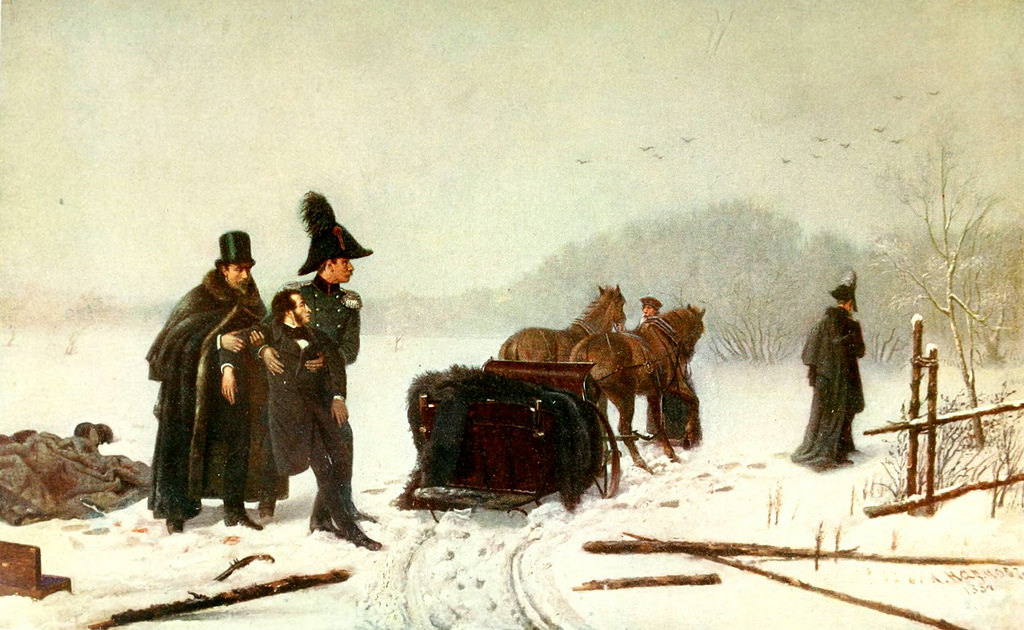
Pushkin duel with d”Anthes, 1884, Naumov
Emile Antoine Bayard entered the 1884 Salon with a painting about a rapier duel between two women on well known spot in the Bois de Boulogne. The painting became famous and travelled the world, stimulating the artist to make a sequel “the reconciliation” in which the opponent kneels beside the wounded female to comfort and in which the second is waiving for the distant coach to arrive at the scene.
An affair of honour, 1884, Emile Antoine Bayard
Reconciliation, 1884, Emile Antoine Bayard
A famous historical example of such a duel happened in August 1892 in Liechtenstein. Two Austrian noblewomen, Princess Pauline von Metternich and Countess Kielmannsegg, fought a duel because of an argument for floral arrangements for the Vienna Musical and Theatrical Exhibition. For medical assistance the ladies asked Baroness Lublinksa who insisted on fighting topless to avoid septic wounds from contaminated clothing.
Jean Leon Gerome also painted a duel scene. In the Bois du Boulogne, a mortally wounded pierrot, sinks in the arms of his seconds. The painting started a lot of speculation about which incident Gerome had used as his inspiration, illustrating the frequent occurence of duels in Paris during the 19th century. Also the Italian Mancini illustrates that duelling was not just an innocent gentlemans play but a deadly serious business.
The duel after the masquerade, 1858, Jean Leon Gerome
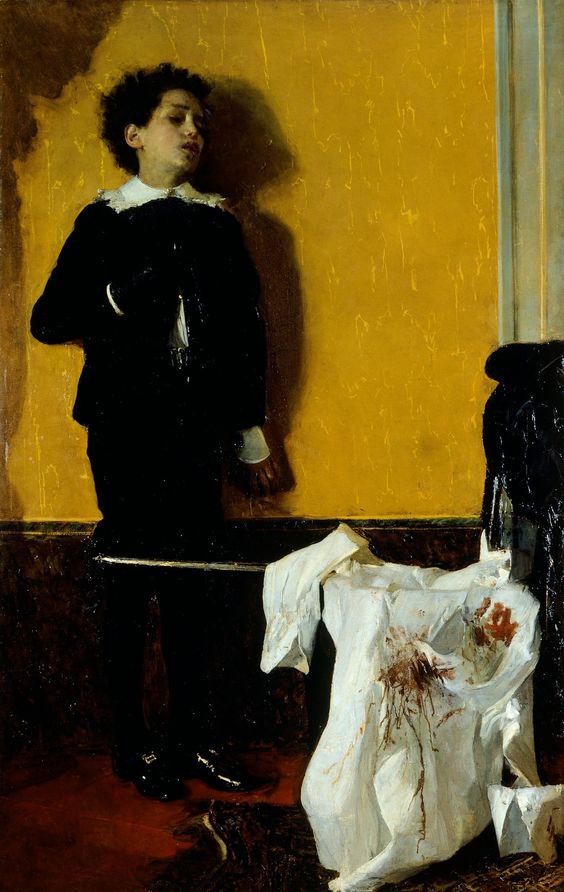
After the duel, 1872, Antonio Mancini
To end this guided tour, an extra-ordinary duel which was fought in the air must be mentioned. In 1808 Monsieur Granpree and monsieur Le Pique, became opponents in an argument about a woman who turned out to be a real femme fatale.
Northampton Mercury – Saturday 23 July 1808

